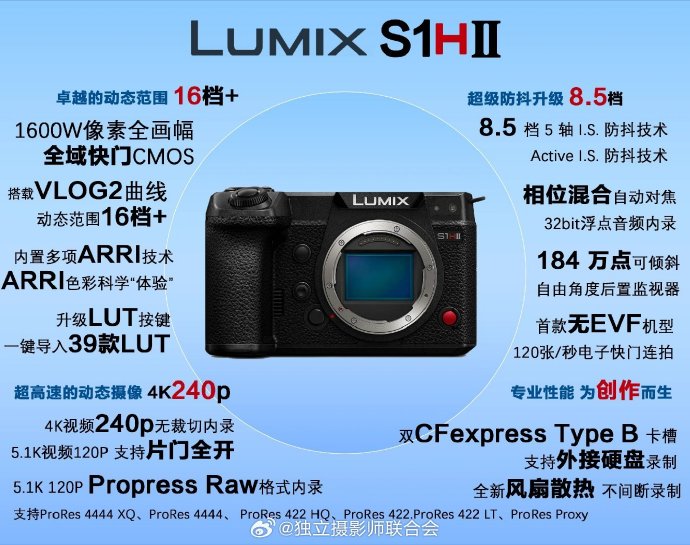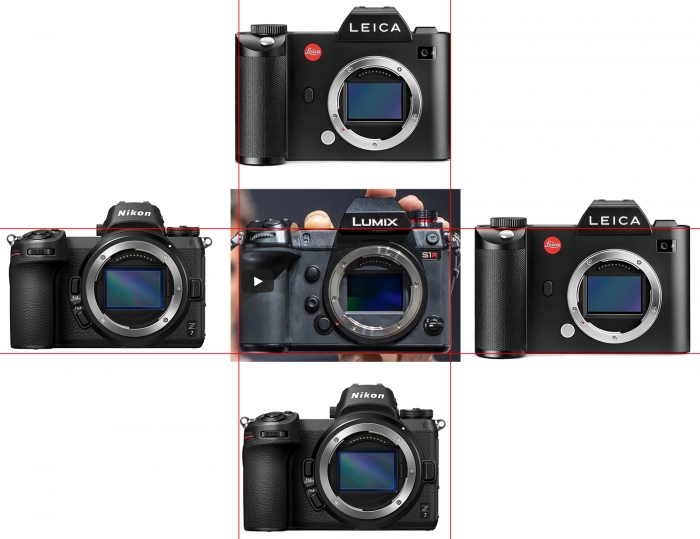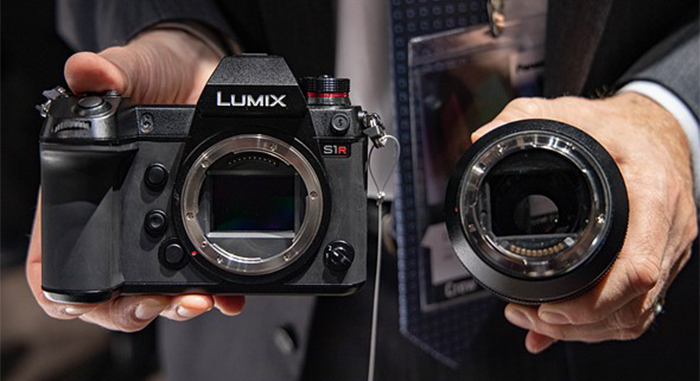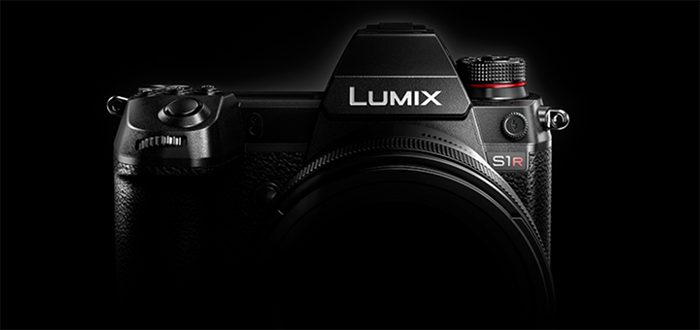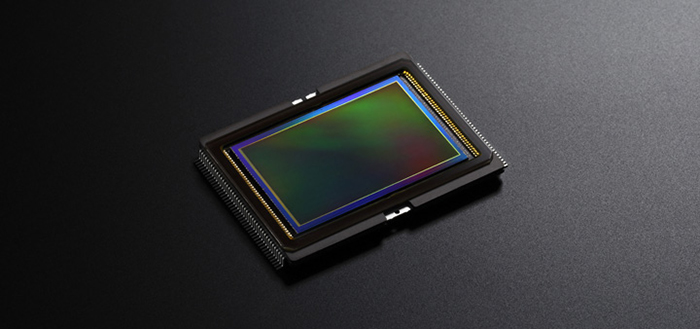I had the chance to shoot a pre-production version of the Lumix S1R last week, and thought you might be interested to see how it compares in size and layout to the Lumix G9 and GH5s. The camera I was photographing is a very early model that doesn’t have the final finish, so I’m told the covering will look very different once it is launches, as perhaps will some of the buttons/dials.
While this is the S1R we are told that the S1 will use exactly the same body, though there are bound to be some clearly identifiable markings to separate the two.
Front view
When placed side-by-side the S1R doesn’t actually look so much bigger than the existing top end Lumix G models. It is obviously taller and a bit wider, but the G9 still comes up to almost the top of the S1R’s mode dial. The main difference from the front view is the size of the lens mount. The S1R uses the Leica L mount which measures 50mm in diameter, while the G series cameras use the 38mm Micro Four Thirds mount.
From the front the function buttons are clearly seen, as is the shape of the hand grip evidently designed to help us support longer and heavier lenses than we have in the G series. The lens release button has switched from the right of the mount to the left, in accordance with the specifications of the L Mount – and the registration red dot is much lower down the mount.
You can see too that the Function lever from the G9 has been adopted by the new S series cameras.
Top down
The top plates of the S1R and the G9 have much more in common with each other than they do with the GH5s. The main mode dial is practically the same – other than the direct access to picture filters – and the drive modes are positioned around the base of the dial on both models.

The Lumix S1R has a new on/off switch on the top plate instead of around the shutter release, which in turn calls for a separate back light button for the top plate LCD information panel. The three feature buttons for white balance, ISO and exposure compensation are in much the same place, and have the same touch-identifiers to help us tell one from the other, but they are quite a bit bigger on the S1R.
The hotshoe I assume will be more like that of the GH5s that it will the G9, as it offers support for the DMW-XLR1 XLR professional microphone adapter. The current range of flash guns will also be supported.
Side-on
You can see that the slope that the shutter button is mounted on has a much longer and steeper incline on the S1R than that of the GH5s and even the G9. This will possibly allow the shutter finger to help balance the camera when we’re not actually shooting – and it may help that finger find the shutter button when it is needed. With a heavy lens mounted there will be much more pressure in that area under the shutter finger, so moving the on/off switch may have been to help users avoid accidentally turning the camera off when trying to find the release button.

You might also note that the ‘prism’ housing in the S1R has the same V.Mode button that the G9 uses to alter the size of the view in the viewfinder. This suggests that the default magnification in the viewfinder will be substantial so we’ll have that massive kind of view that we get in the G9. Panasonic has promised us an EVF with a higher resolution than any currently available – including the 4.4-million-dot unit used in the Leica SL.
Back view
There has been a slight revision of the control layout for the new S series, probably to reflect the size of the body and the lenses it is designed to use. The joystick is much closer to the grip as a proportion of the total distance from grip to viewfinder, but in real terms probably it is about the same distance for the thumb to travel as it is on the G9. The AF area control button is shifted upwards and next to the AF-on button and the Q Menu button is back to the place is was on the GH5 and GH5s – and the GH4.

The focus mode dial has also changed slightly, and instead of the switch referring to markings on the camera itself it will have markings on the dial as it turns passed a register on the top of the camera. This makes it easier to use when looking down on the camera.
You’ll see too that the video button is now on the back of the camera, right next to the viewfinder. I wonder if this will be the same on the more video-centric S1. Finally for the right side of the back, the ‘bin’ and ‘return’ functions no longer share a button – possibly to prevent accidental deletions, though I can’t think how you’d delete images by accident using the existing system.
Top left on the back we have a new lock switch, which may be used to lock all the buttons on the rear of the camera. The GX8 had a lock feature, and while the G9 has Operation Lock this looks a bit different.
The eye-piece surround is very different on the S1R, with its big circular bumper instead of the usual squared-off slip-on cup. It is also much firmer and seems much less prone to being pulled off or of ripping.
Of course the biggest different on the back of the camera is the way the screen is hinged. We are used to vari-angle screens on the GH and G models, but the S1R and S1 will have tri-axis screens that flip up and down in landscape orientation, and in portrait mode they flip out from the bottom to allow a low angle view. This means we can have the screen at an angle without having it sticking out from the side of the camera.
Forward
In appreciation of the heavier lenses of the S system Panasonic has shifted the forward finger wheel even further forward to sit in front of the shutter release button – a little more like its position on the original G1 and more in keeping with most DSLRs.

Although the L mount of the S cameras is wider than that of the G mount, the distance between the mount and the sensor is hardly any different. In the S the sensor will be 20mm from the mount, and in the G series that distance is only 0.5mm shorter, at 19.5mm. As with the Micro Four Thirds mount, this short flange depth means that it will be easy to mount third party lenses on the new camera as most other formats use a greater distance between mount and sensor. Panasonic has explicitly said it will not make an adapter for Micro Four Thirds lenses, as the covering area would only give us access to half the sensor, but almost all current and legacy 35mm/full frame lenses will be able to be used with a simple adapter.
Just poking out from the left of the bodies you can see the traditional flash synchronisation PC socket. It’s nice that Panasonic has stuck with this when other brands are leaving them off, though I suppose the S series will be cameras more widely used with cabled studio flash than the G series.
Mummy and baby
Here’s the Lumix S1R compared with the Lumix GX800 for size. The GX800 is the smallest of the Lumix G cameras, and is actually smaller than most compact cameras even though it is part of an interchangeable lens system. I’m not really sure what this shows about the cameras other than that one is bigger than the other, but I thought it would be fun. It would also be fun it Panasonic could make an S series camera with the same body-mount proportions and form factor as the GX800. We may have to wait for that though.
S System highlights reminder
- S 1R will have 47MP
- S1 will have 24MP
- The system will use the Leica L mount
- Lenses announced include 24-105mm, 70-200mm, 50mm f/1.4
- There will be ten lenses by end of 2020
- The cameras are weather sealed
- The EVF will have higher resolution than that of any existing camera
- Two card slots, one each for XQD and SD
- Dual Hinge LCD – tilt up/down in both orientations
- The Dual IS system will see in-body and in-lens compensation working together
- Both models will offer 4K 60p video in-camera
- The focusing system will continue to use DFD
- 50mm mount diameter
- Both cameras will be compatible with the DMW-XLR1 XLR adapter
- The S series will use the same flash system as the current G series cameras

